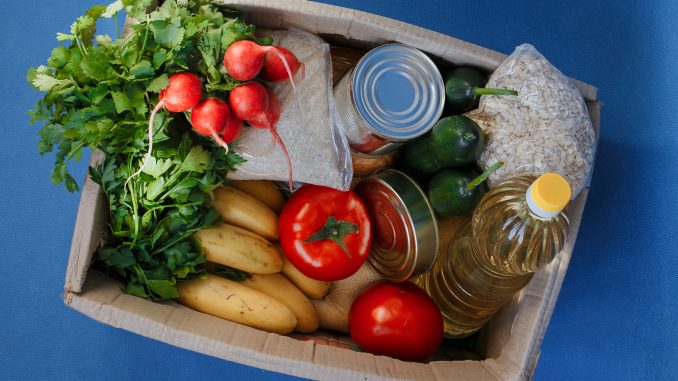
In a society where so much food ends up in the dumpster—and then the landfill—millions live without access to enough food to meet their basic needs.
Somewhere between 30% and 40% of the U.S. food supply is wasted, according to the U.S. Food and Drug Administration. Such figures are particularly tough to swallow in places with high rates of food insecurity such as Butte County, says Sheila McQuaid, a program manager with Chico State’s Center for Healthy Communities.
“Conservatively, you could say one in five residents are food insecure in Butte County,” she says. “When you look at that data, it makes a lot of sense that we look into ways to recover edible food for our community.”
Recovery means collecting food that would have been thrown away and using it to feed people who would otherwise go hungry. Inevitably, some food that people could have eaten ends up in the Neal Road Recycling and Waste Facility, says Valerie Meza, recycling coordinator for Butte County. But efforts are underway to divert as much food as possible.
“Getting surplus food—which is often fresh, perishable food that needs to be eaten right away—to people who have limited food access is a real win.”
Sheila McQuaid, a program manager with Chico State’s Center for Healthy Communities
“Through grassroots efforts and the recovery program in Butte County, we are currently diverting 60% of food waste from the landfill,” she says.
Edible food recovery is part of a sweeping California law—SB 1383, or Short-Lived Climate Pollutant Organic Waste Reductions—which aims to reduce the greenhouse gas emissions produced by food and other organic material in landfills. Local governments across California are now compelled to reduce by 75% the amount of organic waste that ends up in landfills by 2025.
Local food businesses are also under pressure to drastically reduce how much of their food gets thrown away. Under the law, such businesses must donate all edible but unsellable food, with the deadline to comply for the first tier of food-generators fast approaching.
“It’s a huge mandate,” McQuaid says. “People are just figuring this out. We’re working really closely with Butte County to help make sure they can comply.”
One technology-based solution is the 530 Food Rescue App, which allows local food businesses that must comply with SB 1383 to donate their surplus food. A network of volunteers picks up donations and brings them to food pantries, homeless shelters and housing groups.
About 250 people have downloaded the 530 Food Rescue app since it launched last year, and there are some 70 active users who have picked up and dropped off at least one food donation, says McQuaid.
“We mobilize volunteers to transport food donations, and it’s really giving people an opportunity to help and kind of rebuild the fabric of our community a little bit,” she says. “Every time somebody picks up a donation, they walk into a food business that cares a lot about the food they produce. They pick it up and they drop it off at a nonprofit or low-income housing site we partner with.”
The program has worked with about 50 food donors, which include local farms, restaurants, bakeries, coffee shops, caterers, grocery stores, school districts and organizations such as the North State Food Bank—an organization that works to distribute food to low-income people throughout the region that occasionally has a surplus of immediately perishable food.
Indeed, the program is helping fill gaps in the existing food recovery system and allowing existing nonprofits, food businesses and local government officials better coordinate their efforts. “530 Food Rescue helps connect the dots between all the different organizations,” says Meza.
Meza also points to the grassroots efforts of African American and Hmong gardening communities in Oroville and Butte Environmental Council’s Drop in the Bucket household food waste-collection program as under-the-radar efforts that are already making a difference.
Of course, California law is forcing the issue. It remains to be seen whether the local system actually has the capacity to handle the huge increase in food recovery, McQuaid says, but there is also vast potential to better meet the community’s basic needs: “Getting surplus food—which is often fresh, perishable food that needs to be eaten right away—to people who have limited food access is a real win.”
Learn more at www.buttecounty.net/publicworks

